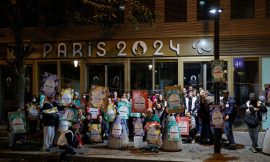The city of Paris is considering the creation of 300 hectares of green spaces by 2040, raising the question of where to find them in the saturated Parisian territory. Urban architect Albert Levy is calling for a policy of urban forestry.
After a policy of densification of construction in Paris for more than a decade, with concrete covering every available plot of land, noting the deficit of green spaces (only 77 hectares created between 2006 and 2021) and their importance for a healthy environment, the city of Paris has set an ambitious objective in its new bioclimatic local urban planning – which will be voted on in 2024 after a public inquiry – to catch up by creating some 300 hectares of greenery in the capital by 2040, and thereby reach the optimal “health” standard recommended by the WHO of 10 square meters per inhabitant, immediately raising the question of where to find them in this finite and saturated space of the Parisian territory, limited to around 100 km², or 10,540 hectares.
The debate is raging about the feasibility of this catch-up and its size: “too late”, “unrealistic”, “impossible”, “utopian”, “demagogic”. The city responds that it will find them everywhere: in private gardens, in the heart of blocks, in schoolyards, in the gardens of administrations and institutions, to be opened, in existing public parks, to be expanded, on roofs, to be vegetated, by transforming streets into garden streets, by reclaiming the lawns of racecourses, the spaces of cemeteries, planting everywhere.



